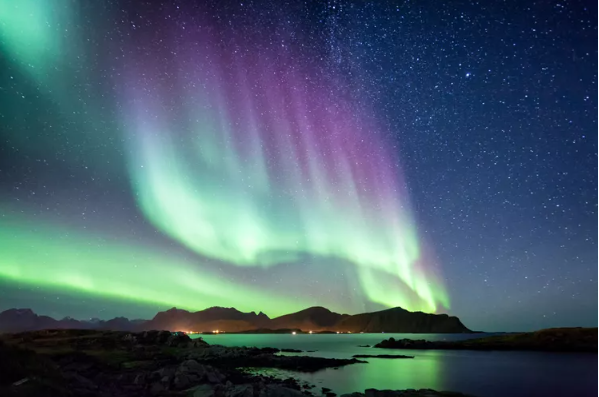There’s a chance that the northern lights will be making yet another appearance across the United States during the evening of Wednesday, November 6. This would be one of the many chances for stargazers to see the vibrant colors this year.

The Northern Lights, or the aurora borealis, are created by magnetic storms triggered by solar activity, such as solar flares or coronal mass ejections (CME), according to NASA’s Jet Propulsion Laboratory. Energetic charged particles from these magnetic storms are carried from the sun by solar winds. When the particles enter our atmosphere, they collide with oxygen and nitrogen particles. As the air particles shed the energy acquired during the collision, each atom glows in a different color.
The display on November 6 is a low probability forecast, but stargazers may still catch a glimpse of the northern lights. The National Oceanic and Atmospheric Administration Space Weather Prediction Center (NOAA) initially predicted this event would be a G1 geomagnetic storm (minor). Now, it is likely that the CME will only graze the Earth’s magnetosphere, meaning the aurora borealis may not be as vibrant and visible as previous events.
If the northern lights do become visible, those in Washington, Idaho, Montana, North Dakota, South Dakota, Minnesota, Wisconsin, Michigan, and Maine may be able to spot them anywhere between 7 to 10 p.m. EST.
Since space weather can change quickly, those interested in viewing the northern lights should check the NOAA’s aurora view line and its 30-minute forecast for updates. If the show is underwhelming, solar flares and CMEs may be more frequent until 2026, meaning there will likely be more opportunities to view the northern lights soon.